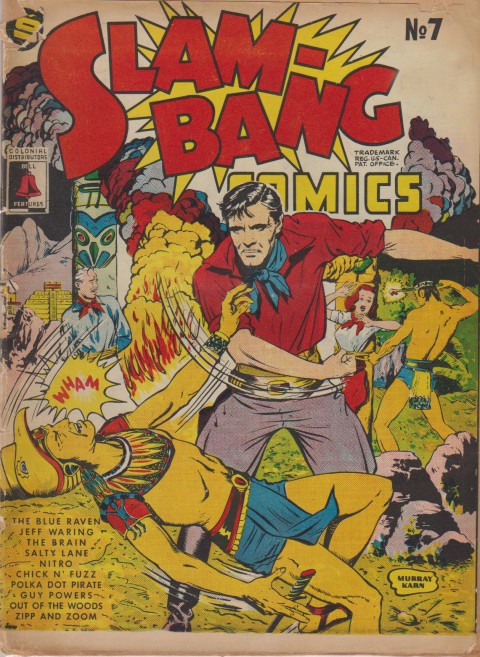
This week I want to talk about a significant comic from the late WECA period, Slam-Bang Comics No. 7, with a cover date of May, 1946. (Jim Finlay informs me that his indicia for this issue has the date July, 1946 pencilled in, maybe with the May date whited out? Anybody else have a copy they could check?) It took the cover banner from Fawcett’s short live run of a same titled series of 7 issues from 1940, but why it began in Canada with an initial number 7 is still a mystery. Perhaps it was some sort of nod or licensing response to the Fawcett run, but who knows?
Anyway, here we have what is what Cy Bell and his company envisioned as the direction they intended to pursue in their effort to survive against the reappearance of American comics in the country. This comic was fulfilling the promise of full colour comic content that was appearing in the final panels of some of the last original content black and white issues.
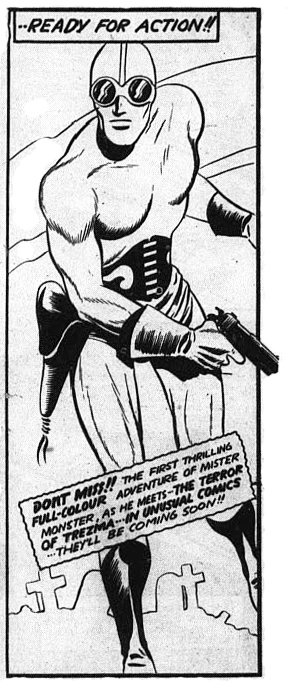
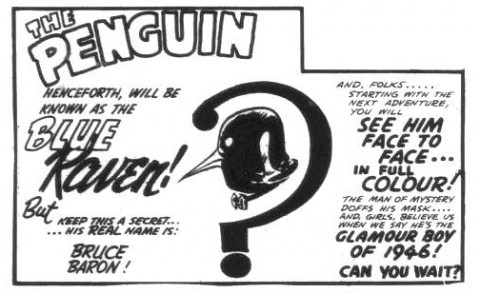
Manny Easson’s The Funny Comics, featuring Dizzy Don, had already bitten the dust about a year earlier with issue 20, though Easson kept the rights to the character and revived the book around the same time as Slam-Bang 7 with Dizzy Don Comics No. 21 (Spring, 1946) now put out by his own Dizzy Don Enterprises publishing company and in full colour (it continued for another full colour issue No. 22 that appeared in October, 1946 before it’s option was picked up by F. E. Howard publishing in 1947).
The next black-and-white Bell title to fall by the wayside seems to be Wow Comics with issue 30 around the Christmas season of 1945-6. It was in this issue that the change in direction for the Penguin to the Blue Raven was announced.
Then the last issues of the other Bell titles (Commando 22, Active 28, Joke 26, and Triumph 31) all seemed to come out just at the time of or just before Slam Bang Comics No. 7 (May, 1946). Dime Comics seemed to be the only black-and-white title to appear after Slam-Bang 7 came out and on to the end of the summer of 1946 with issue No. 28 around August still in black-and-white.
The Slam-Bang Comics 7 is a great Murray Karn rendering of Jeff Waring, his own original creation but taken over by Jerry Lazare from Wow Comics 17-28 when Karn went off to war and then picked up by Karn again in Wow Comics 29 and 30, the final two issues.
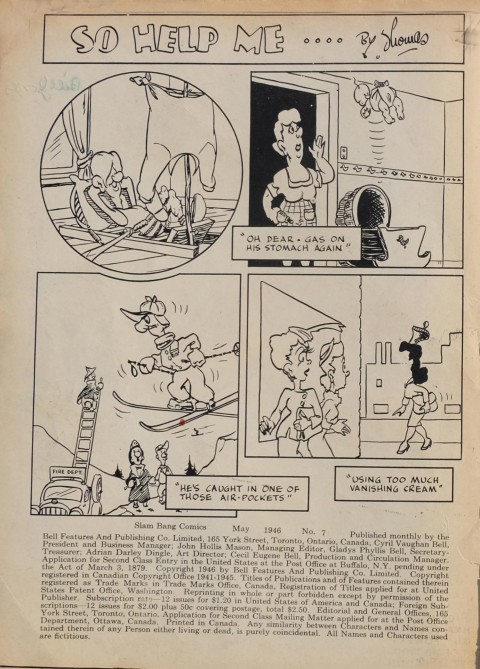
The inside front cover has a fresh Bill Thomas gag page along with the indicia and the inside back cover has a Smith Bros. cough drop ad showing a general store scene done by Lou Skuce.
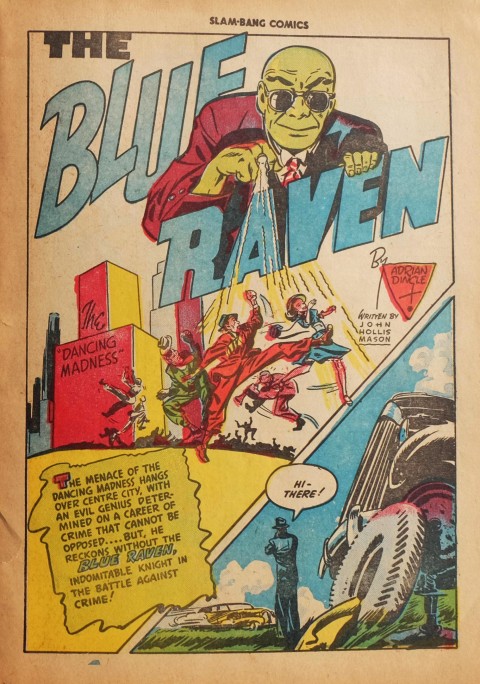
The lead off is the first Blue Raven story promised in the last Penguin panel of Wow Comics No. 30. It’s called “The Dancing Madness.” The story is not written by Adrian Dingle, who created the Penguin and wrote every story since his first appearance in Wow Comics No. 15, but by John Hollis Mason (I wonder if he was related to Nite Owl at all?). Mason was an experienced science fiction short story writer with stories appearing in the Canadian pulp Uncanny Tales and other pulp mags of the era (maybe a Canadian SF fan can tell us more about him?).
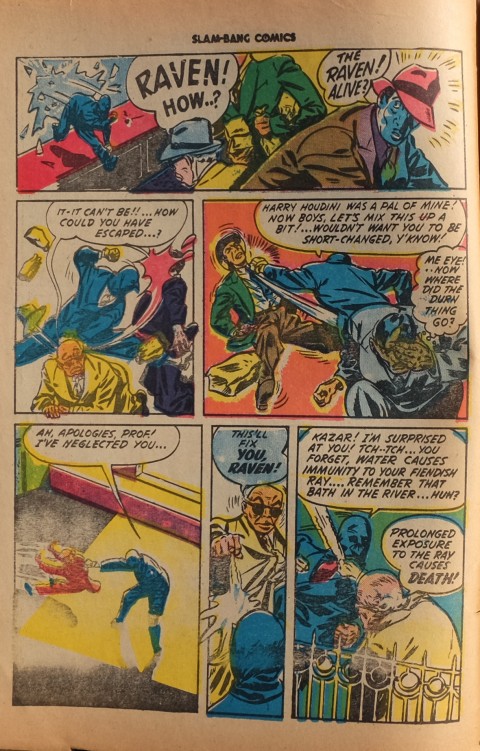
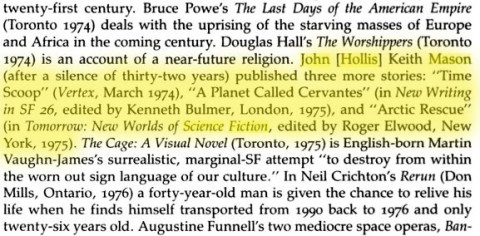
If you take a look at Blue Raven’s costume, you can see that the mask is not that different from Penguin’s, perhaps with a shorter beak and the hero is now without his trademark tuxedo. While The Penguin never had an alter ego in Wow Comics, but here we start off by meeting Bruce Baron who becomes the Blue Raven. No connection or reference in the story is made to his previous incarnation as The Penguin.
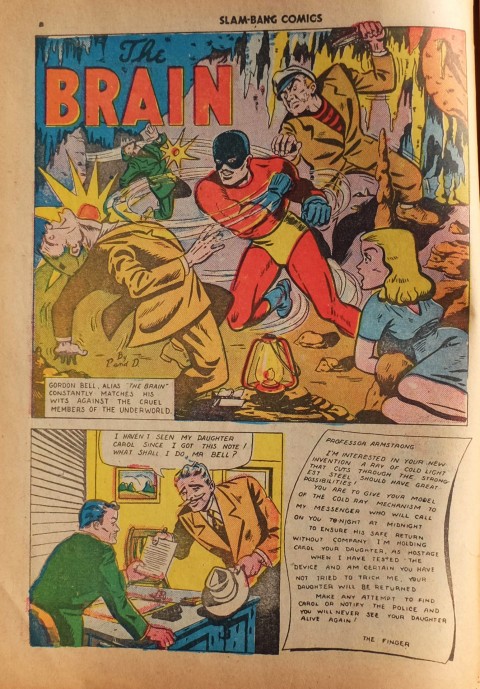
Next story up is the first and only colour rendering of a Brain story, a character originally created by Leo Bachle. This story is credited to “P. and D.”, the same credits given for the Brain story in Active Comics No. 27. My own speculation is that this could be Adrian Dingle’s wife Pat (who was already writing for Triumph Comics when it still was a Hillborough Studios title as the “P.”, but I have no idea who the “D.” could be. The Brain’s costume is perhaps the most familiar colour combination though it varied a lot on the only colour comparison we have in the Active Comics covers on which The Brain appeared.
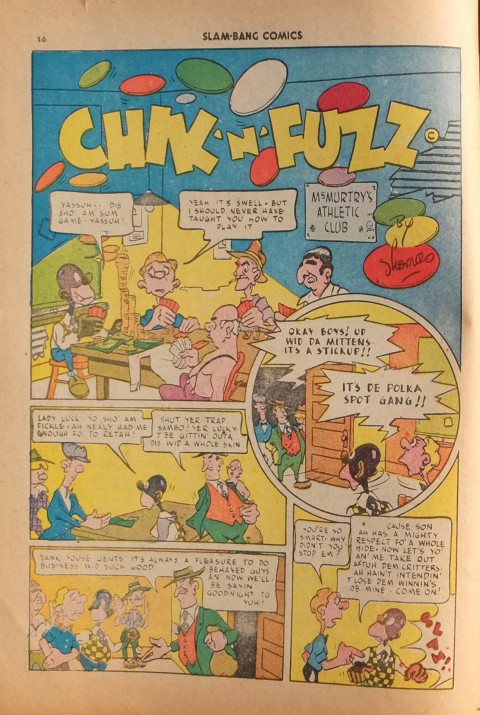
The third feature is the cartoony “Chik ‘n’ Fuzz” by Bill Thomas, who started working for Bell Features after the war. The fourth story is a Salty Lane story by Clayton Dexter (Howard B. Cowan), one of the best Canadian whites artists and who also started working for Bell after returning from the war. “Chik ‘n’ Fuzz” had already appeared in later issues of Dime Comics and Salty Lane in late issues of Commando Comics.
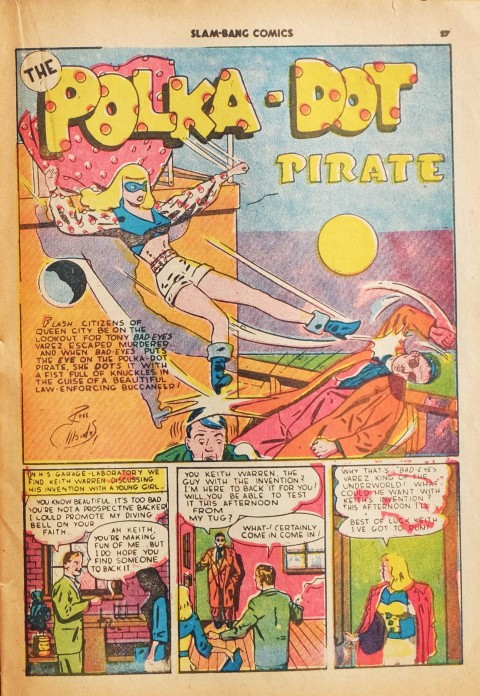
The next story features the third female Bell Features superhero (come to think of it, were these the only female super heroes in the WECA era?) after Nelvana and The Wing–that is the Polka-Dot Pirate. She was Ross Mendes’ creation. Mendes later became an accomplished Canadian abstract artists) who also taught at the Ontario College of Art and Design in Toronto. She was a masked, fist-swinging, buccaneer-themed crime fighter with a polka-dot cape, puffy polka-dot sleeves and polka-dot sash. These three female super heroes would have made a great team.
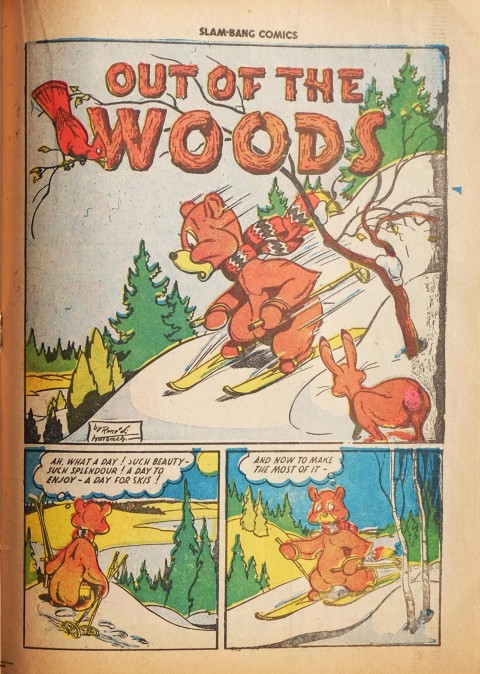
The sixth feature is a funny animal story, “Out of the Woods” done by Rene Kulbach who, Adrian Dingle noted in his 1973 Now and Then Times interview with Dave Sim and John Balg, was “extremely good at drawing animals.” This feature had previously appeared in Dime Comics and starred Fuzzy Bear who got himself and his animal pals into all sorts of forest fixes.
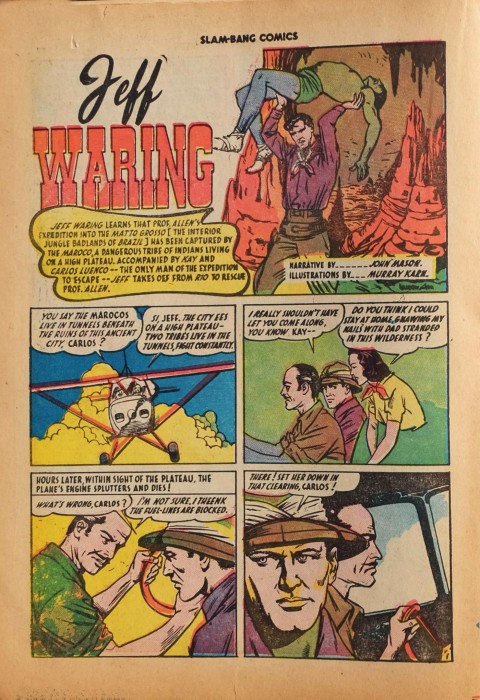
The lucky seventh feature of this large book was the colour Jeff Waring story, a second story in this issue written by the science fiction short story writer, John Hollis Mason (who on occasion used the pseudonym, John Keith Mason) and drawn by the original creator and writer for the character, Murray Karn. It tells the story of Jeff’s rescue of a Professor from the clutches of an Amazon Indian tribe.
Next comes the only Bell Features colour Nitro story, written and drawn by his creator Jerry Lazare. Nitro’s costume is a pinkish skin-tone colour that I’ve never seen before. Lazare makes it clear that Nitro has no super powers and just fight crime with his bravery and fists.
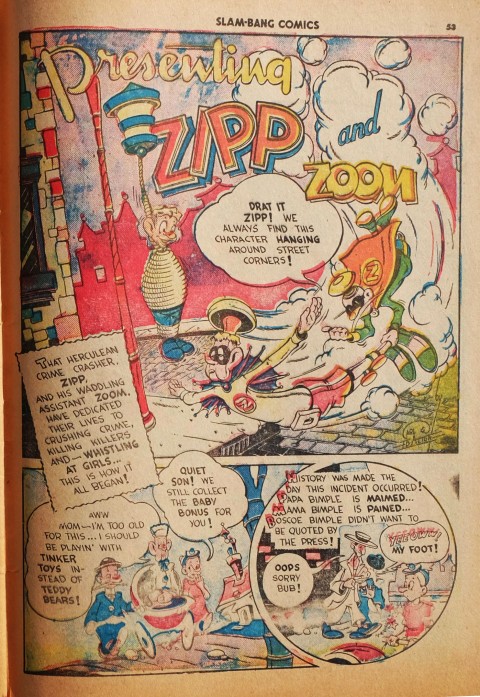
The last two stories in this 64 pg. issue are a “Zipp and Zoom” by Carl and Ed Alton which is a look at the beginnings of two comical, bumbling costumed crime fighters presented in the best Doodlebugs fashion and a Guy Powers story that is unsigned but it looks like it’s certainly the work of Fred Kelly. It also looks like it’s the story that belongs to the Dingle cover that was published on the hybrid Active Comics No. 29, but I may be wrong.
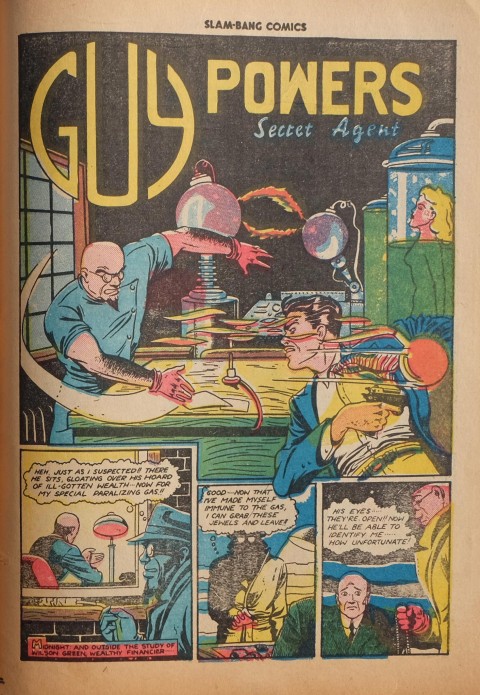
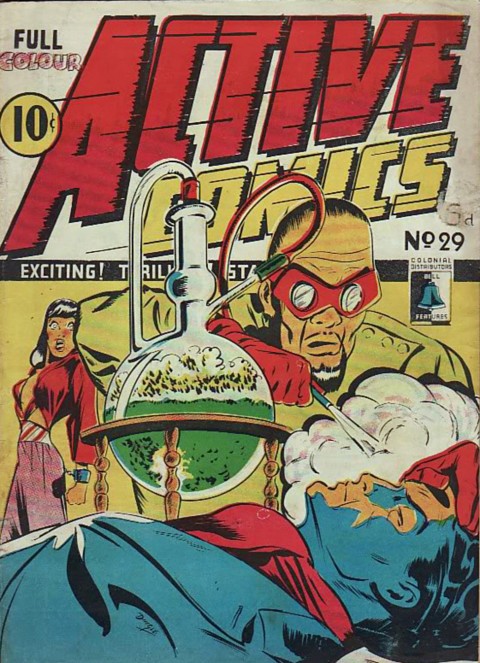
So there you have it, what looks like the only realized example of what Bell Features was trying to produce in its desire to make full colour Canadian post-war comics. Somehow, whether due to a shortage of newsprint or an inability to efficiently output their own original colour comics, Bell Features reverted to reprinting American content in their books—still,in my eyes, one of the important WECA books.

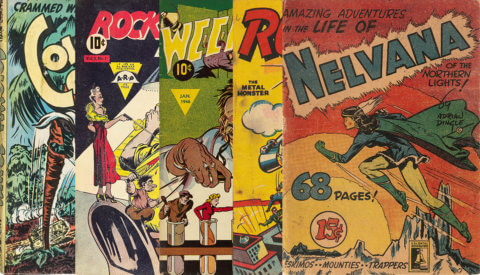
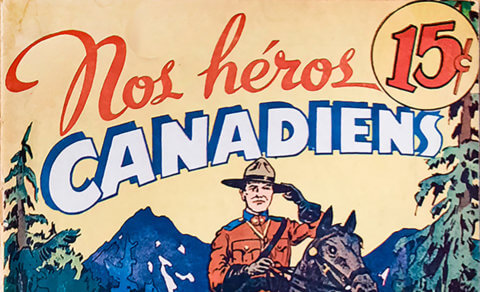
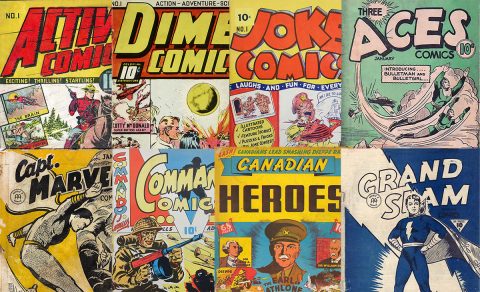
The Brain artwork in this issue could be Paul Dak maybe? The colour in these stories is throwing me off trying to compare art styles with b & w stories.
The ‘D’ might be for Don McKeague, but I think it’s too late for his work, was he still around the Bell comics by this time?
Does anyone else care to make a try and identify this?
That’s possible, Jim, but to me it doesn’t look like the Paul Dak art that appears in the Matt Morgan story in Triumph 30 or the Paul Dak’s artwork in Dime 28. This “P. and D.” also did another black and white Brain story in Dime 27. To me it must be two people, one the writer and the other the artist. I think that you are right that McKeague was no longer with Bell after the war. Maybe we’ll find out exactly who they are one day.
I don’t know if I would agree with that Ivan, I still think that it could be Paul Dak’s artwork on the Brain story, possibly using a slightly different style. Look at the funnier Adrian Dingle pieces done under his Darian pen name for example.
If you look at the Matt Morgan tale in Joke Comics issue 26, it was written by a ‘P’, ‘Pat’ Hamitton with art by Paul Dak, so you have a P & D team right there. I’d like to see more pages for comparison.
I don’t know anything about this Pat Hamitton guy though, have you seen any other stories of his in the Bell Features line?
The more I look at these pages, Jim, the more I think that you may be right about this possibility. I’ll have to look at more examples. But isn’t it ‘Pat’ Hamilton, not Hamitton?
Is it Hamilton? I sadly don’t own a copy of the book that I made my notes (hand written) from so I can’t check more closely. If someone who has a Joke #26 can determine this I’ll back off my version of the spelling.
While on the subject of comic creators in Joke #26, do you know anything about the person behind the Stompy Smith feature, R. H. Taylor? It’s probably too much of a stretch to expect to find that he (or she) would be related to Mel or Rick Taylor isn’t it?
I’ll send you a scan, Jim.
Here is the indicia of my Slam Bang 7 which is cut shorter as part of a bound volume.
It also has a blotted out marking on the front cover that looks like “6d”
http://canadasowncomics.com/wp-content/uploads/SlamBang_7_indicia_from_bound_volume.jpg
Okay.
Yes, now that I’m looking at the actual page it does say ‘Pat’ Hamilton. Like your city. Good catch there Ivan and thanks for sending me the page over. That clears up the spelling of the last name, now we just have to put a face to the writer of one of the later Bell Features original stories.